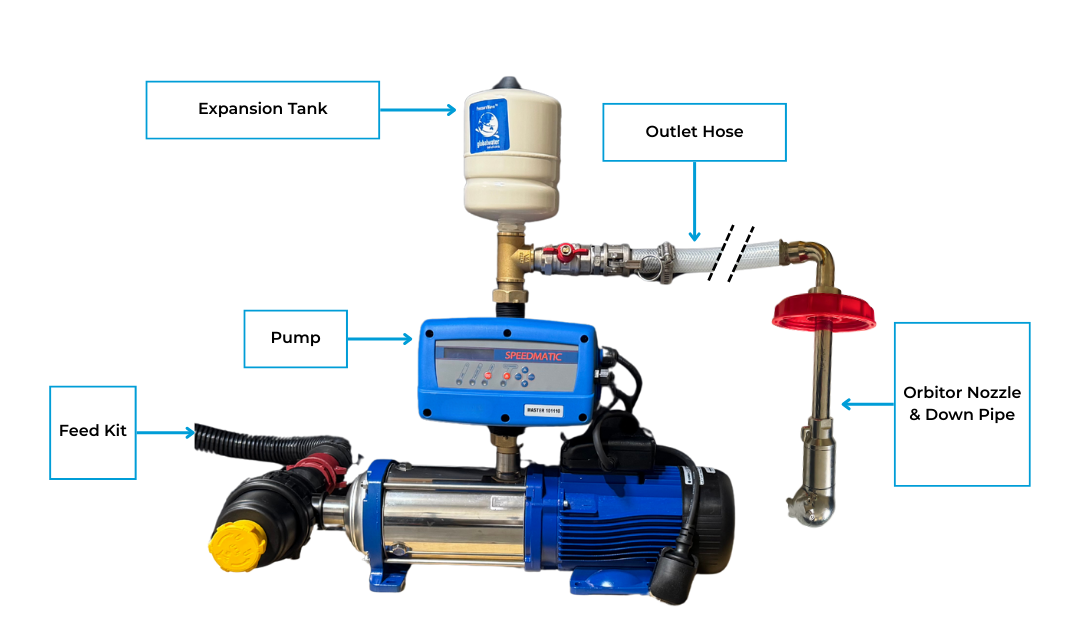IBC Cleaning Kit
The best way to clean an IBC broadly depends on the number of totes being cleaned and the residues that are being cleaned. An in-house automated cleaning solution such as our IBC Cleaning Kit is ideal for companies that have between 5-50 IBCs to clean
per week and where run-off water is relatively easy to handle.
Components of the IBC Cleaning Kit

Advantages
The IBC Cleaning Kit is incredibly easy to operate. It simply needs connecting to a suitable power source and water supply. The lance with cleaning head is screwed into the IBC through a standard IBC lid and the system is ready to go.
The IBC Cleaning Station provides numerous other advantages, including:
- enhanced efficiency through faster cleaning processes (time savings)
- reduced labour costs
- cost savings and environmental benefits from water savings
- a consistent and error-free approach to cleaning
- improved environmental safety through a reduction in waste generation
- compliance with industry-specific hygiene standards
- enhanced workplace safety
- reduced interruptions and cross-contamination risks due to seamless integration into production workflows